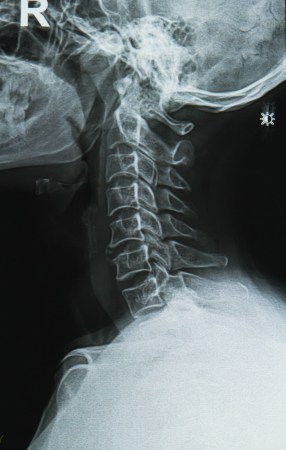Cervical Disc Herniation
Cervical Disc Herniation: What is it?
Cervical Disc Herniation is very common. The bones in your spine (vertebrae) are cushioned by round flat discs. When the discs are healthy they act as shock absorbers. This keeps the spine flexible. When damaged they can bulge or break open. This is called a herniated disc. Herniated discs can happen anywhere in the spine. Although they are most common in the neck and lower back. There are 7 vertebrae between the skull and chest. These make up the cervical spine. These are labeled as C1 through C7.
Causes
A cervical herniated disc can be caused by a couple things. One of the main causes is normal wear and tear. As we age, the disc can become thinner. This happens when we lose fluid that keeps the disc thick. This fluid helps your spine stay flexible. Cervical herniated discs can also be a result of injury to the spine. This can cause tiny tears in the disc. When pressure is put on the disc it can force a jelly-like material out. This can cause the disc to bulge. It can ultimately break open or rupture.
Symptoms
Symptoms for a cervical herniated disc can start spontaneously. A cervical herniated disc can put pressure on the nerve root. These nerves travel to multiple different places in your body. Symptoms can pop up in your neck, arms, hands, fingers and shoulders. Pain patterns can be determined by the location of the herniated disc.
Shoulder pain and weakness can indicate a herniated disc in the C4-C5 region. Weakness in the biceps, and numbness or tingling can indicate a herniated disc in the C5-C6 region. Weakness in the triceps (muscle in the back of the arm) can indicate a herniated disc in the C6-C7 region. One may also feel numbness and tingling down to the middle finger.
Diagnoses
When diagnosing a cervical disc herniation, a physician may use a few different approaches. A physician will need to take the patient’s medical history. They will need a description of the pain. They will also need to know when the symptoms started. Physicians may also want to know what activities aggravate the pain. The physician will also take a physical exam. This happens by testing nerve function and muscle strength in certain parts of the upper body. After the physician has a good idea of location of the pain, they will perform diagnostic tests. They may order a CT scan or an MRI to confirm the presence of a cervical herniated disc.
Treatment
In most cases cervical herniated discs are treated with non-surgical methods. This can mean rest, modifying painful activities, and medication to relieve the pain and inflammation. It may be recommend to see a physical therapist in order to learn exercises to protect your neck. A treatment called traction may be recommended. Traction is a gentle, steady pulling on the head. This allows the neck to stretch and gives the joints some stretch. In rare cases, an artificial disc may be used to replace the damaged disc.
Chiropractic with the ProAdjuster Pulstar instrument also very effective and safe. Check us out at https://www.pulstar.us/patients/find-a-doctor/
